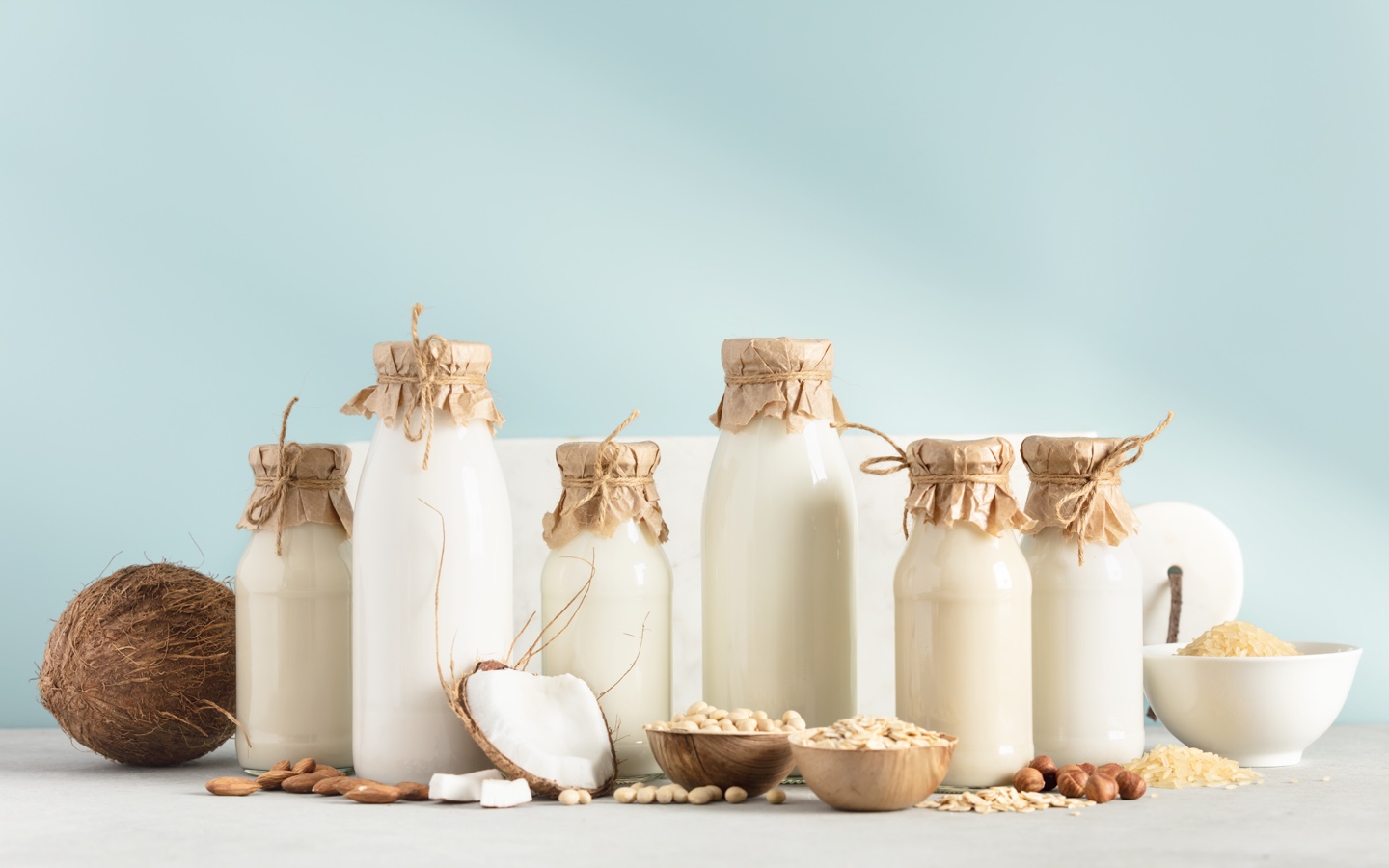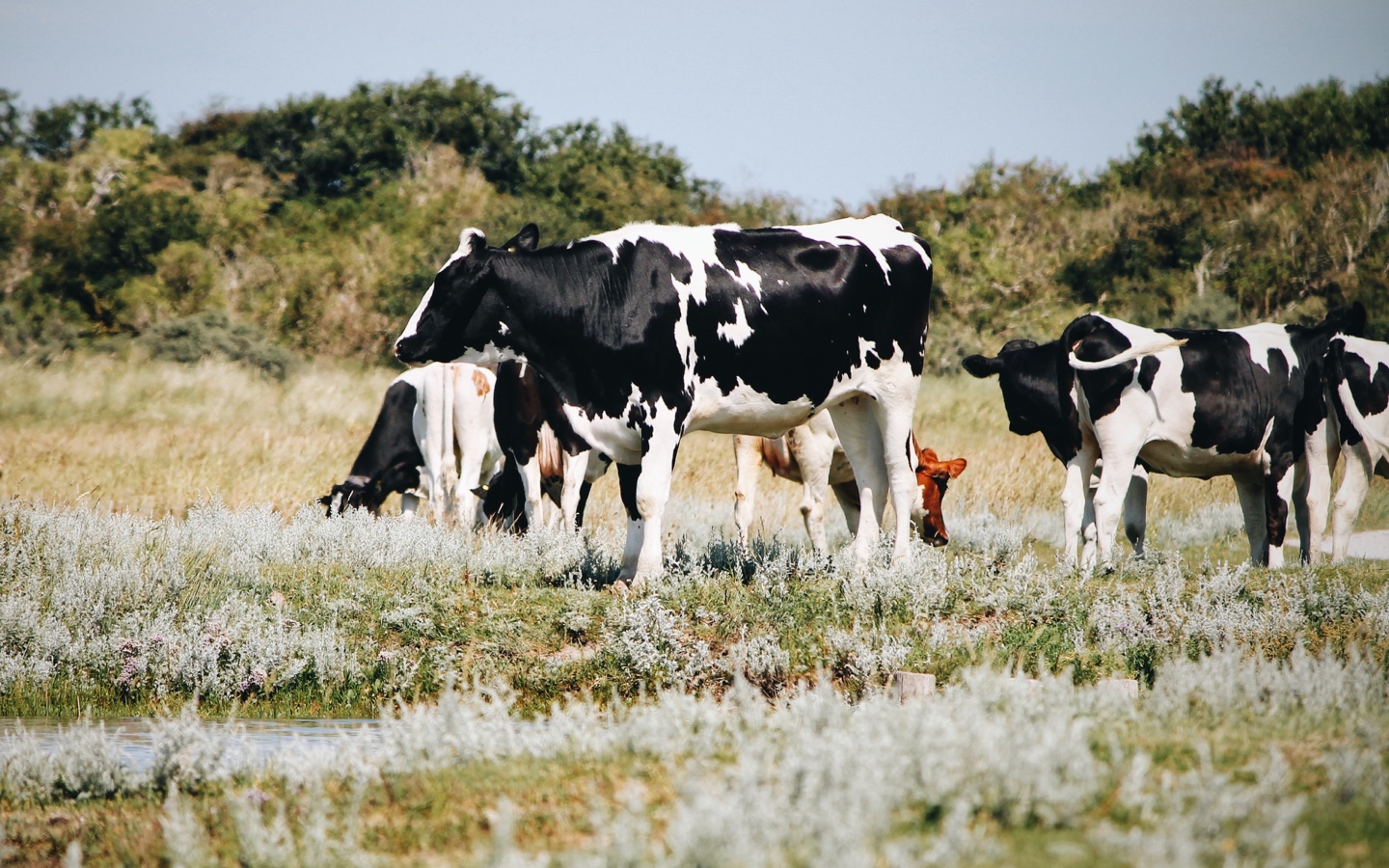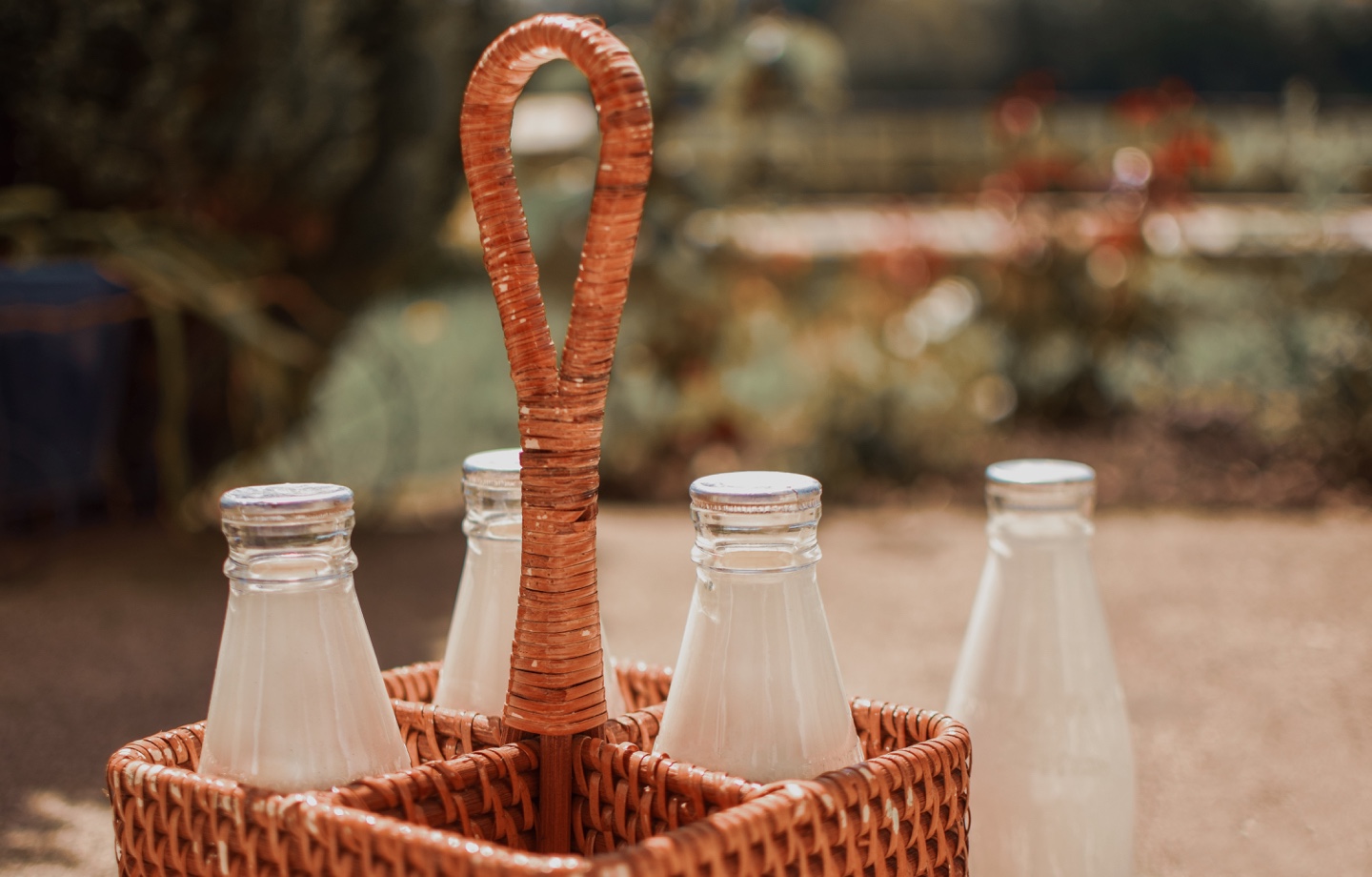Millions of gallons of milk waste get dumped by farmers every year. So why is dairy milk production higher than ever? Here’s what you can do to help.
Peruse the dairy aisle at the grocery store and you’ll find any milk alternative you can think of. Oat, soy, almond, pistachio, rice, coconut, hemp, cashew — they’re all there. Which makes sense. Globally, an estimated 65 percent of the population is lactose intolerant, and in the U.S., it’s around 36 percent. Pair that with the number of Americans who prefer plant-based dairy alternatives (47 percent, according to a recent survey), and the logical conclusion is milk production in the U.S. is likely declining.
Surprisingly, that’s not the case. In 2020, annual milk production in the U.S. was 223 billion pounds, up just over two percent from the 218 billion pounds produced in 2019, according to the USDA’s Milk Production Report. And while 2020 saw the largest milk cow inventory since 1995, it also reported the fourth-largest year-over-year decline in licensed dairy farms in the last 15 years.
In other words, larger-scale operations are edging out smaller, family-owned dairy farms, resulting in cows being pushed to make more milk than ever. Annual milk produced per cow in 2020 was 23,777 pounds, up 389 pounds over the 23,395 pounds produced in 2019. This represents an 11.5 percent increase in milk cow production since 2011, and it’s expected to increase nearly 1.7 percent in 2021, making it the highest growth rate since 2014.

Read more: How to Make Your Own Almond Milk
Here’s the problem: A lot of that milk gets thrown away.
At the start of the pandemic, when restaurants in the U.S. closed and stay-at-home orders began taking effect, dairy farmers were literally dumping as much as 3.7 million gallons of milk a day into lagoons and manure pits, according to Dairy Farmers America, the nation’s largest dairy cooperative. But overproduction and waste aren’t new. In 2016, $43 million worth of unwanted gallons of milk were dumped by farmers. There’s also a federal stockpile of 1.4 billion pounds of cheese, produced as a result of taxpayer-funded subsidies, that the USDA pays tens of millions for each year as a way of bailing out farmers whose supply far exceeds demand.
And, according to a 2018 study conducted at Edinburgh University for The Guardian, 116 tonnes of dairy products are lost or discarded globally each year, with nearly half wasted before it reaches the store as a result of production, distribution, and spoilage. Much of the product that ends up on grocery shelves and in consumer refrigerators is tossed, too. In the U.K, one-fifth of all food waste is dairy, with 90 percent of milk waste occurring in households. It’s estimated that 290,000 tons are thrown away each year.
A lot of that has to do with expiration dates. Dairy is the number one food category in which consumers check the expiration date, with 25 percent of consumers avoiding products that expire within five days of purchase. For popular dairy products like yogurt, 80 percent of waste occurs because of product expiration during the supply chain, and 50 percent of yogurt thrown away by consumers is unopened.
Read more: What Can You Do About Food Waste?
The excessive amount of waste caused by an overabundance of dairy cows — and overproduction — also has huge environmental, human health, and animal welfare impacts.
The water used to make all that milk and maintain dairy farm operations is in the millions of gallons a year. Water is used to clean equipment and structures where cows are housed. It’s also needed to keep dairy cows hydrated, grow feed, and for a manure flushing system that can use up to 150 gallons of water per cow, per day. Cows drink 30 to 50 gallons of water a day. So, for a moderately sized dairy farm of 500 cows, it can take anywhere from 15,000 to 25,000 gallons of water just to provide drinking water in a 24-hour period. Taken together — and excluding the amount of water it takes to grow feed — a 500-cow dairy farm uses an estimated 90,000 to 100,000 gallons of water a day to maintain its herd.
This amount of water usage is a problem. Especially considering the dairy industry’s supply consistently outpaces demand. Add the fact that, as of May 2018, around 33 percent of the U.S.’s total exports of dairy products came from California — a state that is currently experiencing a historic-level drought as a result of climate change — and that we’re expected to run out of freshwater by 2071, and it’s clear that milk isn’t the only resource the dairy industry is wasting.

Read more: Why You Should Care About Water Scarcity
That’s to say nothing of the environmental impact from livestock methane gas emissions, the antibiotics, hormones, and other chemicals that end up in waterways from cow waste, and the inhumane treatment they endure, including forced impregnation and hormone injections to keep milk yields high. (All three of these topics could be a standalone article.)
However, innovations are being made to help mitigate the amount of waste the dairy industry produces. A project known as REFLOW, based in the European Union, is currently testing out ways to turn wastewater and milk residue from dairy farms into phosphate-rich fertilizer and bioplastics. On a small scale, you can do your part by eliminating dairy waste in your own household. Only buy what you need, and use it all before it spoils. If you want to get more involved, Food & Water Watch mobilizes communities across the U.S. to fight to protect our food, water, and climate — one of their initiatives is banning factory farming. And The Humane Farming Association campaigns against the inhumane treatment of farming animals.
Dairy has a waste problem, and the solution is complicated. But if we work to eliminate food waste throughout the entire supply chain and stand up for humane treatment of dairy cows forced to overproduce milk (among other issues), we may be able to reverse the harmful impacts it has on our environment.
Read more: The Businesses Championing Climate Change Legislation
Have feedback on our story? Send us an email at [email protected] and let us know what you think.

Shop Pillows
The Essential Organic Pillow Collection
Gentle, breathable, non-toxic support.





